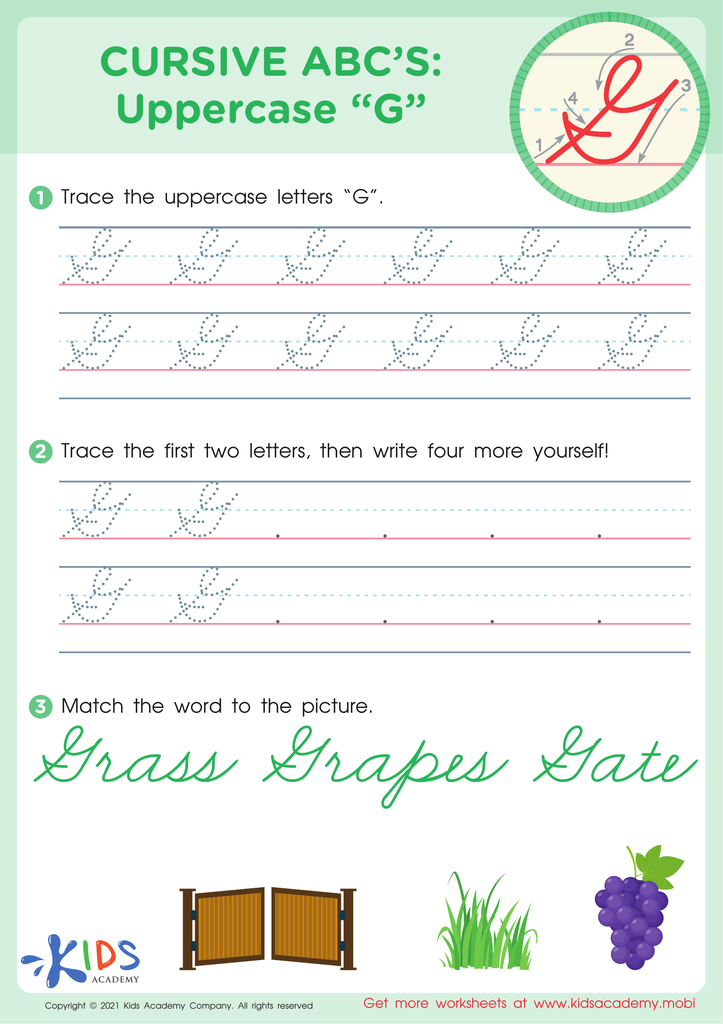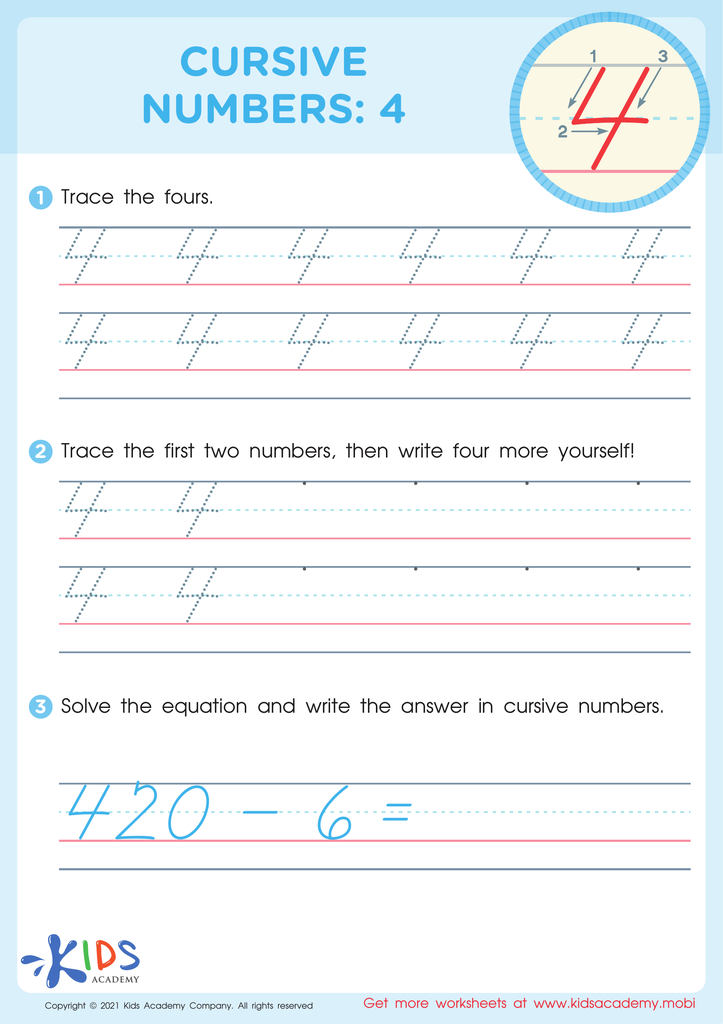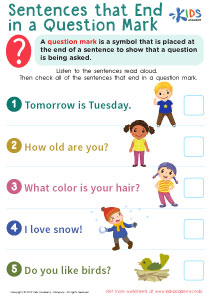Fine motor skills development Writing Worksheets for Ages 4-8
12 filtered results
-
From - To
Enhance your child’s fine motor skills with our engaging writing worksheets, designed specifically for ages 4-8. Our resources help young learners develop essential hand-eye coordination and dexterity through fun activities such as tracing letters, connecting dots, and completing patterns. These worksheets not only promote writing readiness but also improve grip strength and control, setting the foundation for effective handwriting. Tailored to suit various skill levels, each printable worksheet encourages practice while keeping children entertained. Explore our collection today and support your child’s growth in a captivating and educational way! Ideal for toddlers, preschoolers, and early elementary students.


Cursive ABCs: Lowercase d


Cursive ABCs: Lowercase a


Cursive ABCs: Lowercase f


Cursive ABCs: Uppercase F


Cursive ABCs: Uppercase G


Cursive ABCs: Uppercase D


Cursive Numbers: 7 Worksheet


Cursive Numbers: 1 Worksheet


Cursive ABCs: Lowercase c


Cursive ABCs: Lowercase h


Cursive ABCs: Lowercase b


Cursive Numbers: 4 Worksheet
Fine motor skills are crucial for children aged 4-8 as they provide the foundation for everyday tasks and academic success. These skills involve the coordination of small muscles in the hands and fingers, which are essential for activities such as writing, drawing, and manipulating small objects. Parents and teachers should care about fine motor skills development because they directly impact a child’s ability to express themselves creatively, participate in classroom activities, and complete homework efficiently.
Strong fine motor skills enable children to hold pencils, use scissors, and engage in craft activities effectively. When children can manage these tasks confidently, they are more likely to enjoy learning and participate actively in their education. Poor fine motor skills can lead to frustration, decreased self-esteem, and reluctance to engage in schoolwork.
Moreover, fine motor skills are linked to cognitive development and problem-solving abilities. Parents and teachers can support this development by providing engaging activities such as puzzles, art projects, and other hands-on experiences. By fostering fine motor skills, adults help children build confidence, independence, and a love for learning that lasts a lifetime. Investing in this aspect of development can lead to better academic performance and overall well-being for children.




















